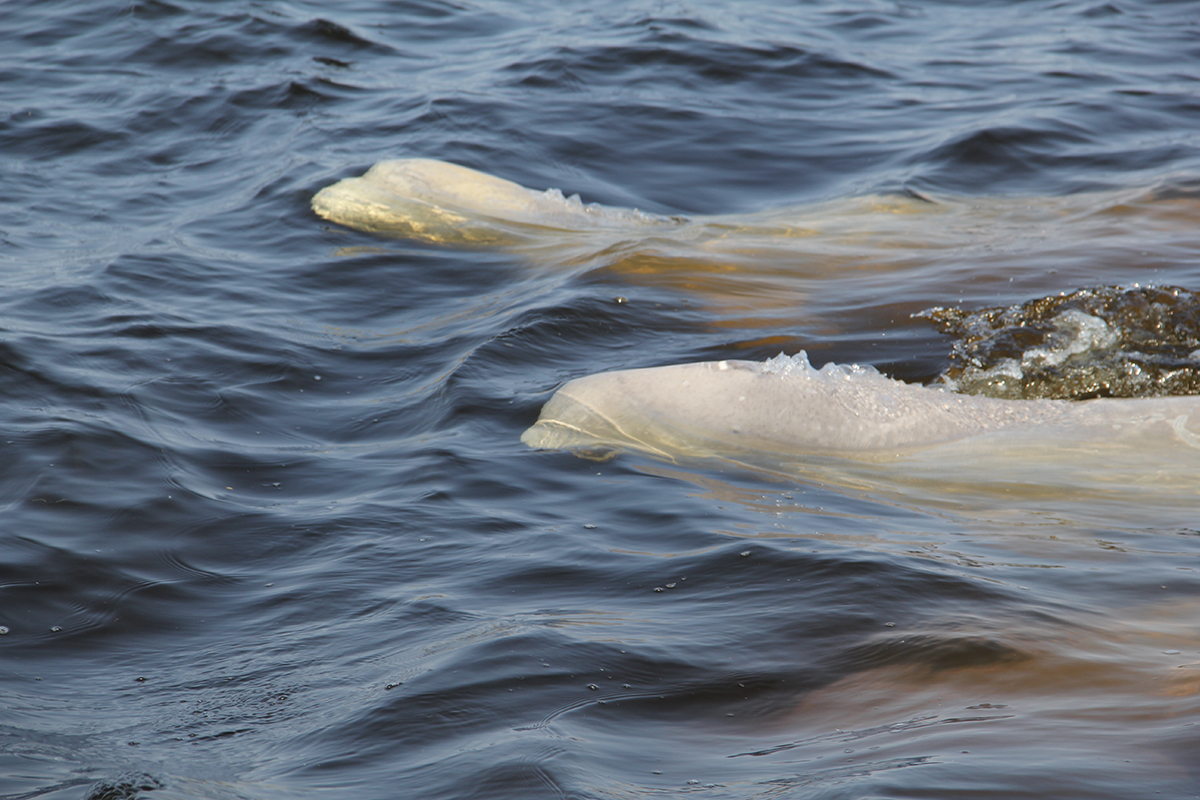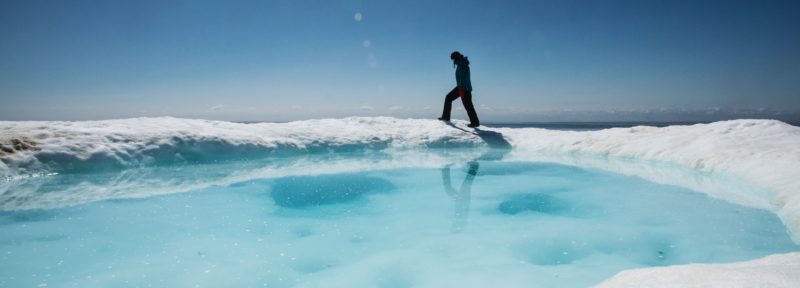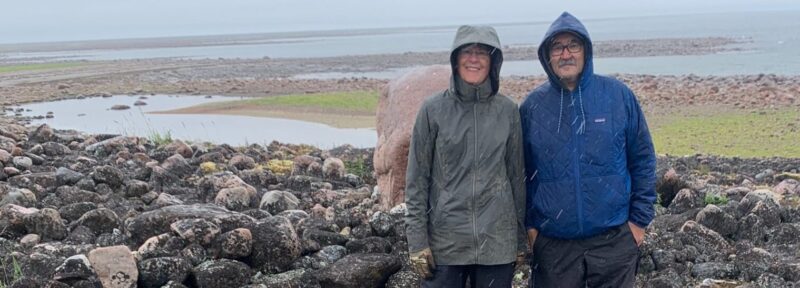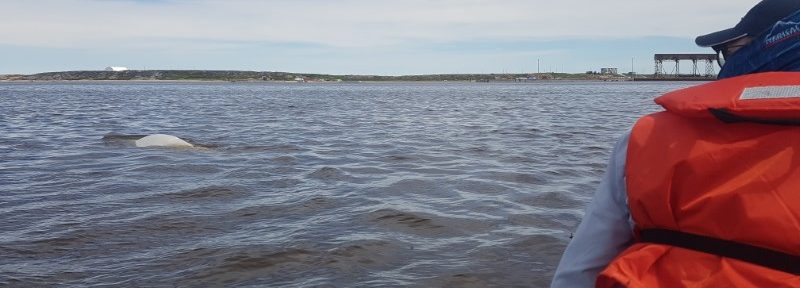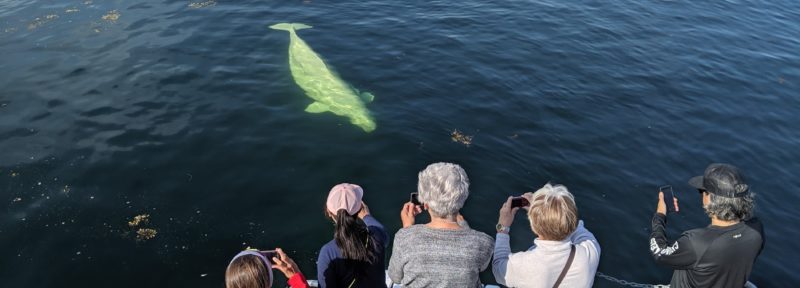How Belugas React to Whale-Watching Boats in Western Hudson Bay
Two belugas swim in the Seal River.
Credit: Oceans North
A multi-year study of how belugas are affected by whale-watching boats in Western Hudson Bay has found that the whales are interacting with vessels more than in the past and may have become used to the boats over the last decade and a half.
The study, published this month in Frontiers in Marine Science, was the result of research conducted in the Churchill River estuary where whale-watching is a popular tourist attraction. The world’s largest population of belugas – an estimated 54,000 whales — congregate each summer in this region to give birth and feed in the Churchill, Nelson and Seal River estuaries.
“It appears as though the belugas have become habituated to the vessels over time,” said Kristin Westdal, science director for Oceans North. “They’re interacting with vessels more than they did in a previous study done 15 years ago.”
Researchers collected data in the summers of 2019, 2020 and 2021 by choosing random groups of belugas to observe for three-minute intervals from whale-watching boats. They recorded the age of the whales, the distance from vessel, initial behaviour and how the belugas reacted to the presence of the vessel. These results were compared with observations of control groups of whales when boats were not on the water.
The study team had originally predicted that mothers with calves would avoid the vessels, while the more curious juvenile belugas would be drawn to them. But the research found that when whale-watching vessels were nearby, all age groups of belugas spent an average of 63 percent of their time interacting with them, including moving alongside the boats, gliding under them, rubbing against them and facing the prop wash.
“These results were the opposite of what we expected,” Kristin said. “Juvenile groups didn’t approach the boats more often than other age classes and females with calves didn’t appear to avoid the vessels.”
Researchers concluded from this behaviour that belugas have become used to whale-watching vessels as tourism has expanded. When the previous study was conducted, Kristin lived in Churchill seasonally and operated a beluga whale-watching kayak business.
The study did not assess whether the interactions with vessels have caused any negative effects for belugas, such as the possible impact of vessel noise. Kristin said any behaviour changes are “extremely short-lived” because the interactions are brief – less than five minutes per whale per day. She also said that if the mothers with calves felt threatened or uncomfortable near the boats, they would not have approached the boats.
“Their interactions suggest they aren’t alarmed or concerned by the vessels,” she said.
A follow-up study is examining more closely how mothers with calves interact with whale-watching vessels. Researchers began gathering data in the summer of 2022 and will complete the study this summer.
“These results are useful for conservation and management planning in the region and the future development of a proposed national marine conservation area,” Kristin said.
Oceans North has long supported the creation of a national marine conservation area in the beluga estuaries of Western Hudson Bay to protect the healthy populations of whales from the threats of climate change and increasing industrialization.
To learn more about the belugas of Western Hudson Bay and the efforts being made to protect this region, check out the episode “The Great Beluga Migration” on our podcast The Ocean Project.
Ruth Teichroeb is a regular contributor to Oceans North and former communications director. She lives in Seattle, WA.

